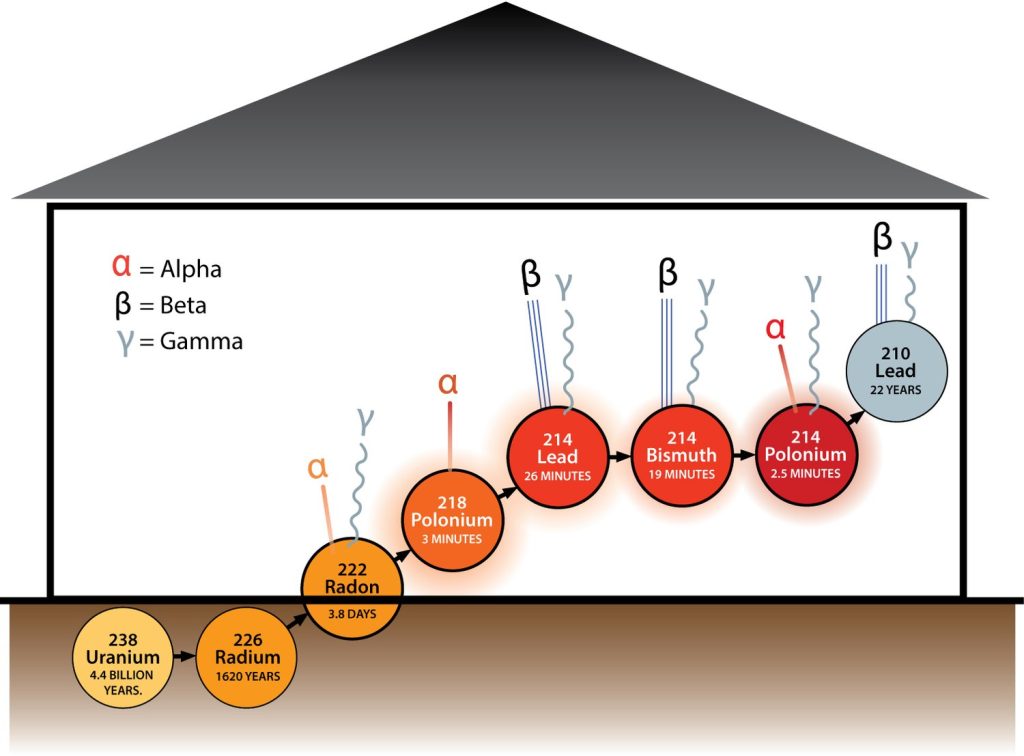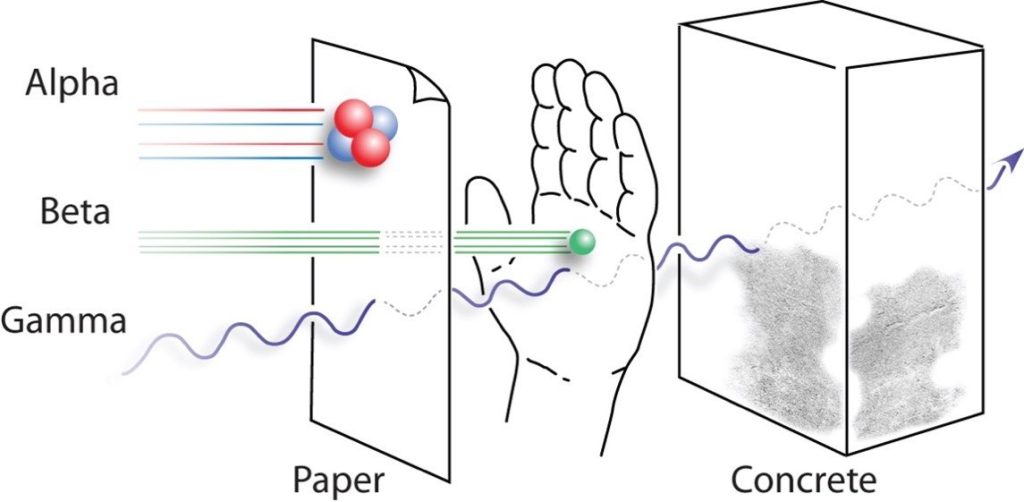Radon is the leading cause of lung cancer deaths among nonsmokers in the United States, taking the lives of approximately 21,000 people each year. Perhaps the saddest part of this statistic is that radon-related deaths are entirely preventable. January is National Radon Action Month, as designated by the EPA, and its purpose is threefold: to increase public awareness of radon and its health effects; promote radon testing and mitigation in existing construction; and inform about current radon-resistant construction practices for new buildings.
Throughout January, Clean Vapor will share an informational series we call Radon Realities. This information is collected from various sources, including our in-house Subject Matter Experts (SMEs), Tom Hatton and Matt Koch, who have a wealth of knowledge and expertise in the radon arena. So, please give us a Follow, a Like, or Share on social media to get a month’s worth of valuable facts and information about radon.

Radon comes from the natural decay of uranium and radium found in nearly all rocks and soils;[1] and can be found in almost any indoor space. Radon (Rn) is a radioactive, colorless, odorless, tasteless noble gas with an atomic mass of 222 and an atomic number of 86. Radon has a half-life of 3.8 days, a relatively short life span for radioactive material, but long enough to be pulled into your lungs through normal breathing.
The graphic above illustrates the migration of radon from the soil into the indoor environment of a home and shows the evolution of the decay of these radioactive elements. Although radon is an inert gas, and does not easily bond with other elements, as it decays, radon produces charged “progeny” or daughter elements of polonium, lead and bismuth, before stabilizing as lead-210. Harmful bursts of radiation happen at each stage of the decay chain.
Radon accounts for up to 50% of the total internal radiation dose from all-natural background sources due to two of its progenies, polonium-218 and polonium-214. These offspring decay and release alpha particles, and the alpha particles can become lodged in the lung tissue, damaging the cells that line the airways, which can induce lung cancer. [2]

While radon gas typically dissipates quickly outdoors, the average indoor radon level is about 1.3 picocuries per liter (pCi/L), according to the EPA. [3] The actionable level for indoor radon (as determined by the EPA) is 4.0 pCi/L. Therefore, if the radon level in a home, school, or workspace meets or exceeds 4.0 pCi/L, the building owner should take action to mitigate the radon, reducing the potential for adverse health consequences.
Radon moves into buildings from the ground below through openings on the floor or walls. Sometimes referred to as “preferential pathways,” these openings include loose or abandoned pipes, drains, sump holes, foundation cracks, migration through a concrete slab, or other unexpected paths. In places where wells and groundwater are the primary drinking water source, radon can enter via the water supply. Because radon comes from rocks and soils, radon typically collects in rooms in contact with the ground, like basements. [4]
The EPA created a “zone of probability” map of the United States to help identify geographic areas with increased potential for elevated indoor radon levels. However, while this map is intended as a broad guideline for the potential presence of radon, no assumptions should be left intact. Additionally, the EPA suggests that every school, home, and commercial building be tested to determine the exact radon levels in the indoor air. Testing methods range from simple DIY kits to extensive indoor air sampling performed by a reputable company. The National Radon Proficiency Program (NRPP) and the National Radon Safety Board (NRSB) certify individuals to do proper radon testing. In addition, most state radon programs will provide a list of qualified indoor air testing companies. If exceedances exist, then a radon mitigation system is recommended to remove radon from the indoor air environment.
Although the mechanical components of a radon mitigation system are often similar or straightforward, the art of mitigating the problem lies in the nuance of the system design. Whether a residence, school, or commercial establishment, every building requires a unique solution based on the elements impacting the structure–such as location, size, geometry, climate, and other factors specific to that building.
Clean Vapor solves complex radon issues in commercial, industrial, and multifamily housing buildings. We focus on creating safe, breathable indoor air environments and protecting human health. If you have radon-related questions about a specific building or structure, you can contact Clean Vapor via email at rhatton@cleanvapor.com or visit the Commercial Radon page on Clean Vapor’s website.
The rest of this series is available on our social media channels: LinkedIn, Facebook, Twitter, and our blog at CleanVapor.com. Please visit the Radon page on the EPA’s website for more information about radon.
###
[1] https://www.epa.gov/radtown/radon-homes-schools-and-buildings
[2] https://www.sciencedirect.com/topics/medicine-and-dentistry/radon-222#:~:text=Rn%2D222%20has%20a%20short,%E2%88%BC30%20min%20or%20less).
[3] https://www.cancer.org/healthy/cancer-causes/radiation-exposure/radon.html#:~:text=The%20EPA%20estimates%20that%20nearly,States%20has%20elevated%20radon%20levels.
[4] https://www.epa.gov/radtown/radon-homes-schools-and-buildings

